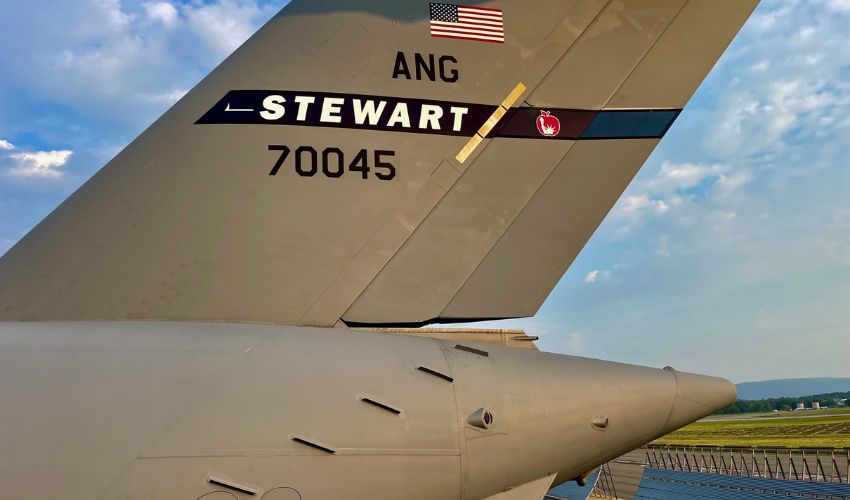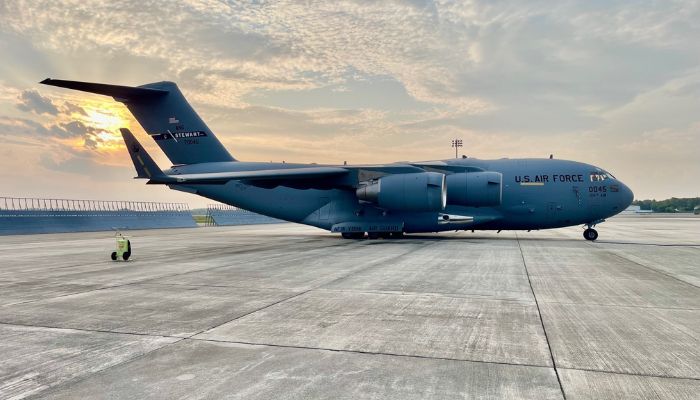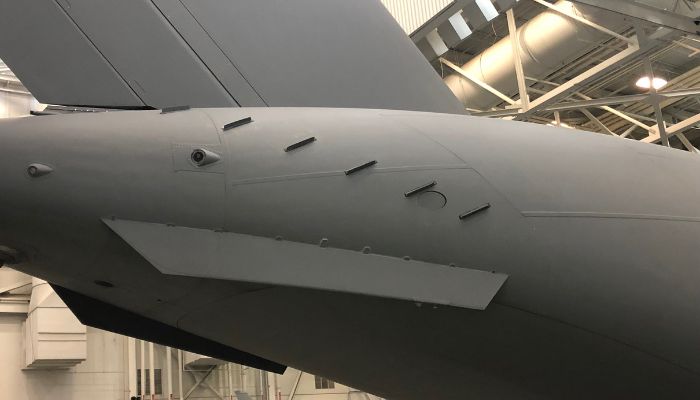USAF Installs 3D Printed Drag Reducers on C-17, Helping to Save Over $14M Annually

Drag reduction is a priority for airplanes as it helps to reduce fuel consumption, increase operational range and increase the speed of the craft. Now it seems that additive manufacturing could play a role. The Air Force Operational Energy and Air Mobility Command of the United States Air Force (USAF) are entering the final phase of evaluation for the use of 3D printed microvane drag reduction technology on the C-17 Globemaster III.
The C-17 Globemaster III is a cargo aircraft that entered into USAF use in 1995. Although the last C-17 was made in 2015, these aircraft continue to be important for the Air Force. However, the USAF continues to work to optimize the C-17 fleet, which are critical for troop transportation. This is where the microvanes come in.

A C-17 Globemaster III with micorvanes successfully installed waiting on the flight line at Steward Air National Guard Base
3D Printed Microvanes to Reduce Drag
So what are they? The 3D printed devices measure about 4 x 16 inches and resemble a thin blade. About a dozen are then attached to the rear of the C-17’s exterior using a strong adhesive bonding. The project has been under works for some time, in a collaboration between the Air Force Research Laboratory, private industry and the Air Force Lifecycle Management Center.
And the results have been astonishing. It seems that C-17s equipped with 3D printed microvanes experience a one-percent reduction in drag as compared to unmodified counterparts. This means enhanced fuel efficiency and the ability to extend the mission range by reducing the aerodynamic drag caused by the design of the cargo door section. Since this reduced drag has a significant impact on fuel consumption, implementing the 3D printed microvanes is expected to help save the USAF over $14M annually.
“Every gallon of fuel saved strengthens our readiness and operational effectiveness,” explains Roberto Guerrero, Deputy Assistant Secretary of the Air Force for Operational Energy, Safety, and Occupational Health. “By adding modern technology like microvanes to our legacy aircraft, we’re saving millions in fuel costs and building capability critical for maintaining our competitive edge in the era of Great Power Competition.”

A close up of the 3D printed drag reducers at back of a plane
Where to Go From Here?
For now, six aircraft are modified for the Logistics Service Assessment (LSA), the final step before fleetwide fielding, according to a press release from the USAF. The six-month LSA will begin after the modification of two further aircraft, and the intent is to expand microvane use across the C-17 fleet. And it will not stop at the United States. The financial savings and increased operational capability has garnered strong interest to add 3D printed microvanes from both Canada and United Kingdom.
The USAF further notes that these 3D printed drag reducers good help address logistical constraints and extend mission distances for superior operational readiness. The reduction of fuel consumption thanks to the microvanes is expected to help strength the ability to sustain operations in contested environments and ensure a more resilient supply chain. In any case, it seems that this project will be a major step forward in optimizing legacy aircraft.
Guerrero concludes, “This collaboration highlights how partnerships drive forward our mission objectives. It’s about ensuring that we remain agile and capable in a rapidly evolving global environment. What’s more, through recent legislation, we can use the savings realized by this technology to fund other initiatives that increase combat capability.”
What do you think of these 3D printed drag reducers? How else is the USAF using 3D printing? Let us know in a comment below or on our LinkedIn, Facebook, and Twitter pages! If you are looking for more 3D printing in aerospace & defense content, check out our dedicated page HERE. Don’t forget to sign up for our free weekly Newsletter here, the latest 3D printing news straight to your inbox! You can also find all our videos on our YouTube channel.
*All Photo Credits: USAF






